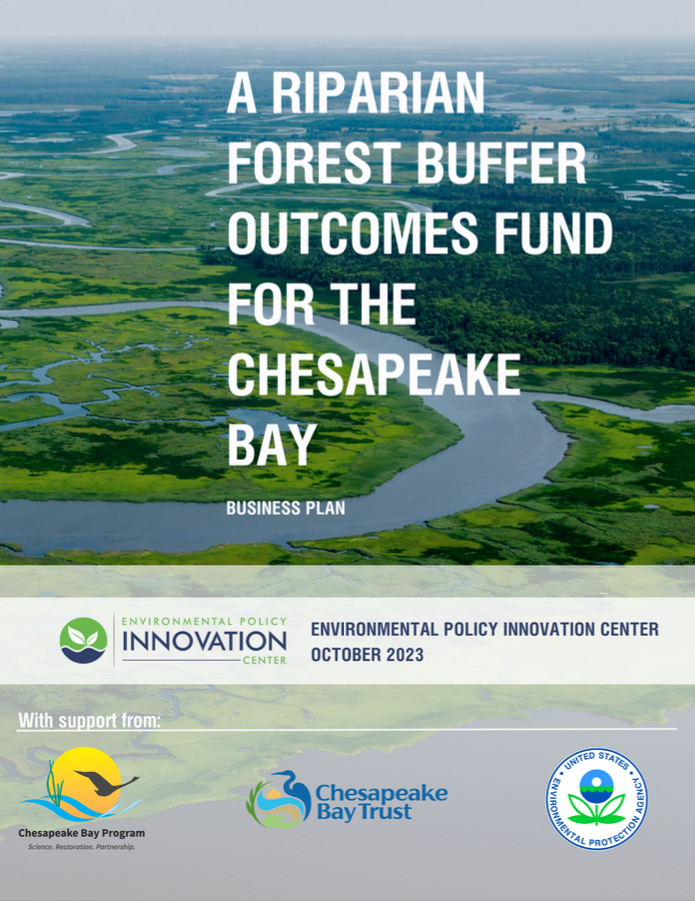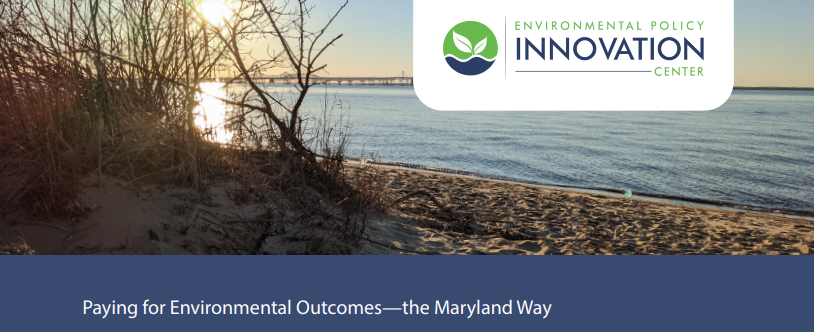
Building a Thriving Biodiversity Credit Market

A Revolving Loan Fund Could Help Protect Watersheds, Biodiversity and Public Access in America’s National Forests

A Balancing Act: Optimizing Payment Schedules in Environmental Pay for Success Contracts

How Government Grants Can Use Innovative Contracting Methods to Open Rivers for Fish

A riparian forest buffer outcomes fund for the Chesapeake Bay

Improving a Program that Works: Prioritizing New Jersey Water Bank Projects in Disadvantaged Communities
This report, published with New Jersey Future, looks at the New Jersey Water Bank (NJWB), which has provided over $9 billion in low-cost financing for water and wastewater infrastructure projects in the state. The report analyzes NJWB awards (i.e. low interest loans and principal forgiveness) over a 5-year period and also assesses the underlying policies governing how New Jersey defines disadvantaged communities.
The report’s ten recommendations would increase the equity and effectiveness of the NJWB program and ensure that communities with the greatest needs receive adequate assistance.

Procurement doesn’t need to be a choke point

Chesapeake Currency: A current snapshot of private investment flowing into watershed conservation and restoration

Purchasing Environmental Progress

A Fairer Funding Stream

Uncommitted State Revolving Funds

2022 Maryland Conservation Finance Act Support Letters
The Maryland Conservation Finance Act is a variety of tweaks to authorize new, simpler contracting approaches and attract more private investment in conservation. These letters showcase the bill’s broad support.

2022 Maryland Conservation Finance Act Explainer
The Maryland Conservation Finance Act is a variety of tweaks to authorize new, simpler contracting approaches and attract more private investment in conservation. This publication explains each section of the bill.

Financing Green Stormwater and Natural Infrastructure with Clean Water State Revolving Funds
In this report, we examine Clean Water State Revolving Fund-financed investments in green stormwater infrastructure and natural infrastructure, which mimic or utilize natural processes to solve water quality and stormwater challenges. Communities around the country face environmental and health consequences due to failing water infrastructure. The Clean Water State Revolving Fund helps address these challenges by financing projects to improve water quality and public health. Most states and territories primarily invest in traditional gray infrastructure. In comparison to gray infrastructure, green stormwater infrastructure and natural infrastructure are often more cost-effective, climate resilient, and provide a plethora of economic and social benefits. We specifically evaluate investments in green stormwater infrastructure and natural infrastructure between 2016 and 2020 and give recommendations to state agencies and the EPA.

Unlocking Clean Water State Revolving Funds to Finance Resilience Projects Across the Great Lakes Region
Established in 1987, Clean Water State Revolving Fund (CWSRF) have played a key role in improving water quality in the United States by providing more than $145 billion to finance more than 42,800 projects nationwide. This report looks at the current status of how CWSRF dollars have been spent across the Great Lakes states, and proposes greener priorities that would spur transformation in environmental, economic, public health, and social outcomes.

Maryland Clean Water Commerce Act Explainer

Replacing Toxic Lead Pipes Faster: Innovative Procurement and Financing Approaches Are Just as Important as Federal Funding
This report explores some key questions: How do we ensure lead pipe replacement happens faster, so people no longer have to drink water contaminated by lead? What efficiencies can we put in place that have been proven to be effective in other spheres? How do we encourage other innovations that can also help speed up lead pipe replacement?

Drinking Water Equity


